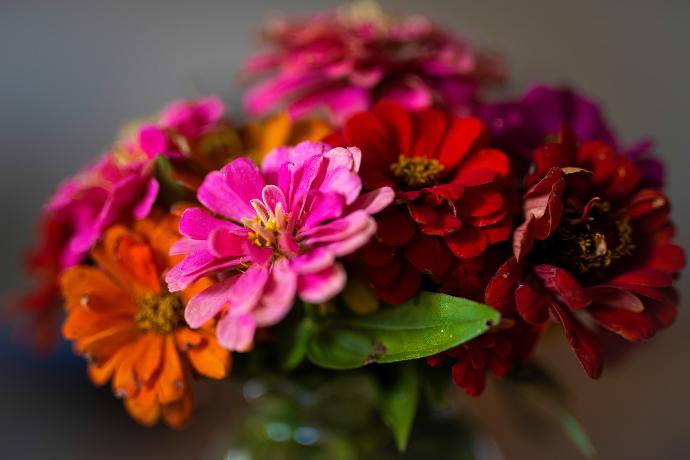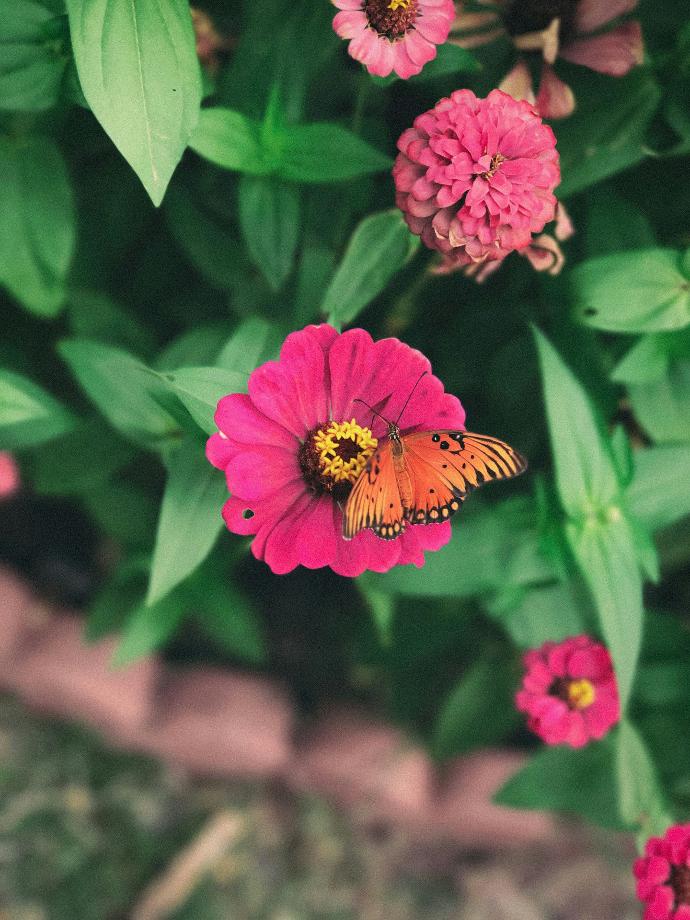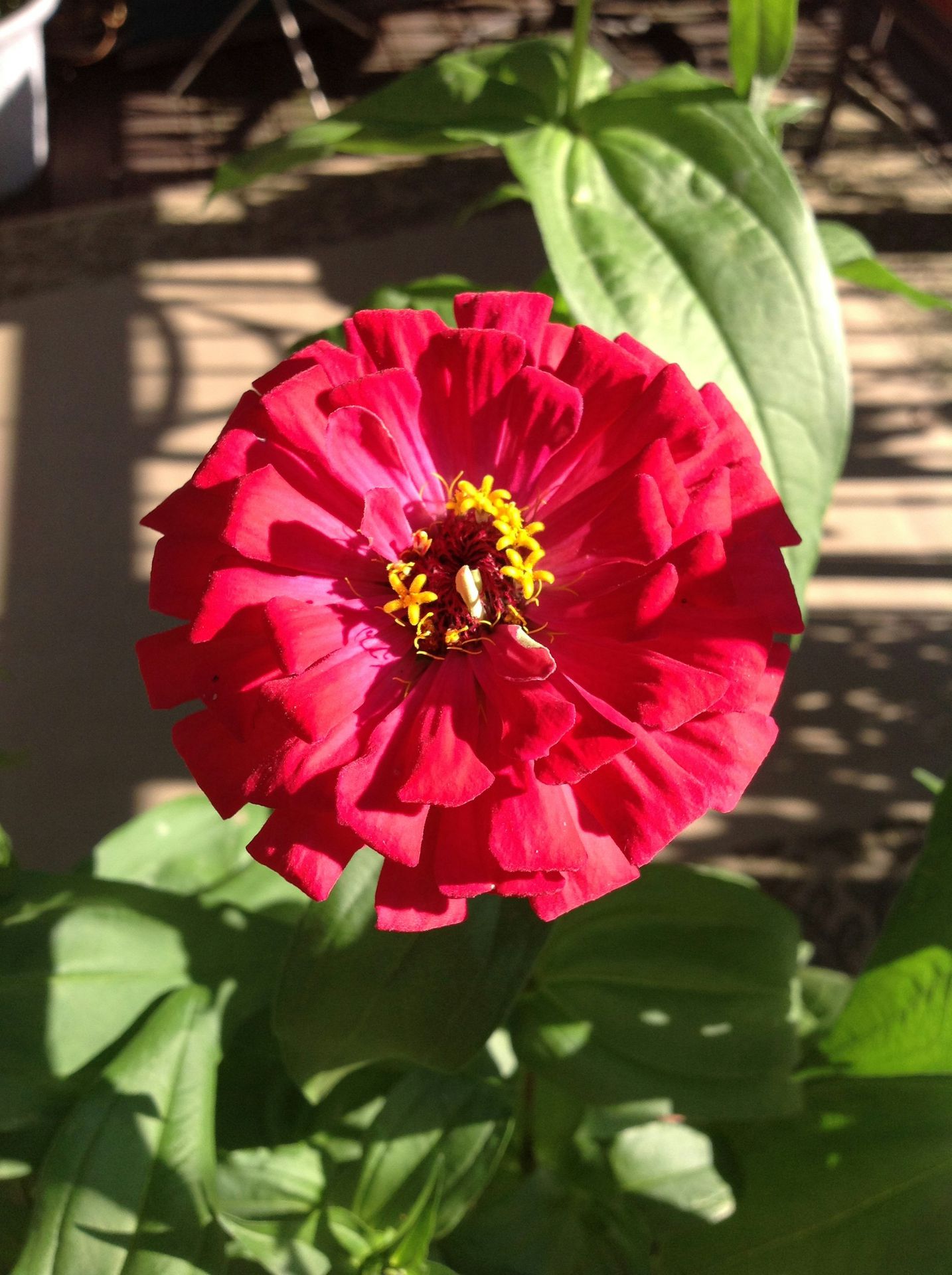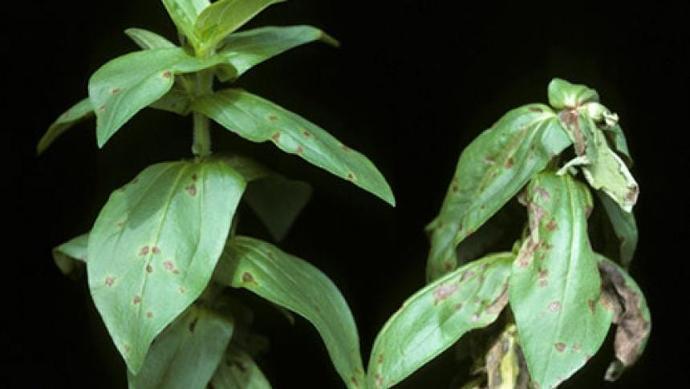Zinnia Plant
Zinnias, herbaceous annuals with fast growth, prefer well-drained soil and full sun. With moderate moisture needs, Zinnias are popular for their colorful and long-lasting blooms, commonly used in gardens and floral arrangements.

Habit
Herbaceous Annual
Height
0.5-1 meter
Growth
Fast
Soil
Well-drained, loamy soil
Shade
Full Sun
Moisture
Moderate
Edible
No
Medicinal
No
Origin
Partial shade
Climatic Condition
Moderate
Temperature (°)
20-30
Humidity (%)
50-60
Potting media
Loamy or sandy soil
Fertilizers
Nitrogen-rich
Watering
High
Plant Weight
300-500 grams
Flowering Time
Summer to Fall
Soil Ph level
6.0-7.5
Water Ph level
6.5-7.0
Soil EC
0.3-0.4 mS/cm
Yield Per Plant
High
NPK ratio
10:10:10
life Span
1-2 years
Health Benefits
Used as ornamental, supports skin health, boosts immunity
Suggested Grow Media or Potting Mix ?
50% loamy soil, 30% compost, 20% sand
Suggested Fertigation/Fertilizers
Fertilize every 2 weeks with a balanced fertilizer.
Common Diseases and Remedies
Powdery Mildew , Bacterial Leaf Spot .
White powder like substances appear on the leaf . Bacteria effects the plant leaves.
Avoid over watering and remove the effected parts.
HEALTH BENEFITS
· Antioxidant Properties: Some traditional medicines use extracts for skin and immune support.
Mood Enhancer: Used in aromatherapy and decoration to reduce stress.
What Is An Zinnia Tree?
Zinnia plants are energetic and adaptable annuals, cherished for their beautiful sprouts and simplicity of care. Local to the Americas, these plants have a place with the Asteraceae family, which incorporates daisies and sunflowers. Zinnias are prestigious for their different blossom structures, going from dahlia-like to prickly plant like, and a wide exhibit of varieties, including red, pink, orange, yellow, and white.

What Are The Different Types Of Zinnia Plants?
1. Dwarf Zinnias
Conservative plants with little blossoms, ideal for lines and holders.
2. Cactus Zinnias
Blossoms with quilled petals, looking like desert flora blossoms.
3. Pompon Zinnias
Twofold blossoms with thickly stuffed petals, looking like pompons.
4. Creeping Zinnia
Low-developing assortments that spread along the ground, reasonable for ground cover.
5. Cut and Returned Again Zinnia
Assortments that produce more blossoms when consistently cut, making them extraordinary for flower bundles.

How to Care Zinnia Plant ?
1. Location
Zinnias flourish in areas with full sun, getting something like 6-8 hours of direct daylight each day. They favor well-depleting soil with a marginally acidic to unbiased pH (around 6.0 to 7.5). Zinnias are not extremely intense with regards to soil fruitfulness and can endure an extensive variety of soil types, for however long they are well-depleting.
2. Sunshine
Zinnias flourish in full sun, and that implies they need something like 6-8 hours of direct daylight every day to develop and sprout well. While they can endure some light shade, their blossoming might be diminished in these circumstances. For the best outcomes, plant zinnias in a bright place where they can absorb the sun's beams for the vast majority of the day.
3. Soil
Zinnias lean toward well-depleting soil that is wealthy in natural matter. A loamy soil with a marginally acidic to impartial pH (around 6.0 to 7.5) is great for zinnias. They can endure an extensive variety of soil types, including sandy or dirt soils, as long as the dirt depletes well.
4. Hydration
Zinnias require customary watering to flourish, particularly during dry periods. It's essential to keep the dirt reliably clammy yet not waterlogged. Permit the top inch of soil to dry out somewhat among waterings, and afterward water completely to guarantee the roots get satisfactory dampness.
5. Nourishment
A decent, water-dissolvable compost can be applied each 2-3 weeks during the developing season. On the other hand, you can utilize a sluggish delivery manure applied toward the start of the developing season to give supplements progressively over the long run.

6.Issues
A parasitic illness that shows up as a white, fine covering on the leaves. It flourishes in warm, sticky circumstances. To forestall fine mold, give great air dissemination around the plants and abstain from above watering.
What are the Benefits of Zinnia Plant ?
1. *Colorful Blooms:* Zinnias are known for their splendid, vivid blossoms, which arrive in many tones, including red, pink, orange, yellow, and white. They add a bright and energetic touch to any garden or bouquet.
2. *Attracts Pollinators:* Zinnias are brilliant pollinator plants, drawing in honey bees, butterflies, and other gainful bugs to the nursery. This can assist with advancing fertilization and biodiversity.

FAQs About Growing Zinnia
1. how to keep up with zinnia plant ?
Keep the dirt reliably clammy yet not waterlogged. Water profoundly when the top inch of soil feels dry, and try not to above water to forestall contagious illnesses.
2. what are the purposes of zinnia plant ?
Zinnias are primarily grown for their colorful and attractive flowers, which add beauty to gardens, borders, and containers.
3. can I grow zinnia plant indoor?
Zinnias require full sun, so place them in a bright, sunny window where they will receive at least 6-8 hours of direct sunlight per day. Consider using a grow light if natural light is insufficient.
4. which pot is best for growing zinnia plant ?
Choose a pot that is at least 8-12 inches deep and wide enough to accommodate the mature size of the zinnia plant. This will allow room for the roots to spread and the plant to grow upright.
5. where can I shop zinnia plant?
Visit your local garden center or nursery, especially in the spring and summer months, when they are likely to have a wide selection of annual bedding plants, including zinnias.

